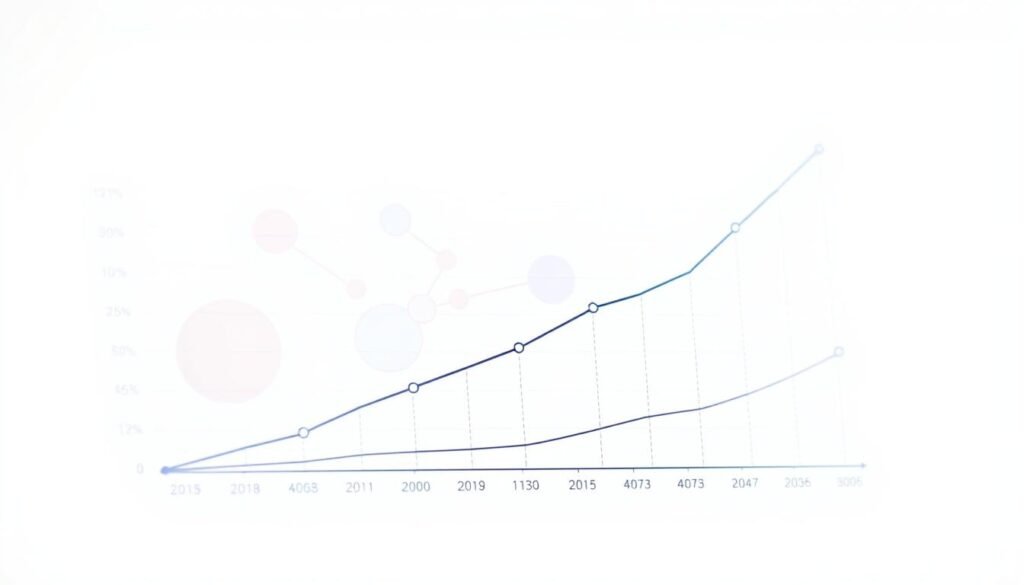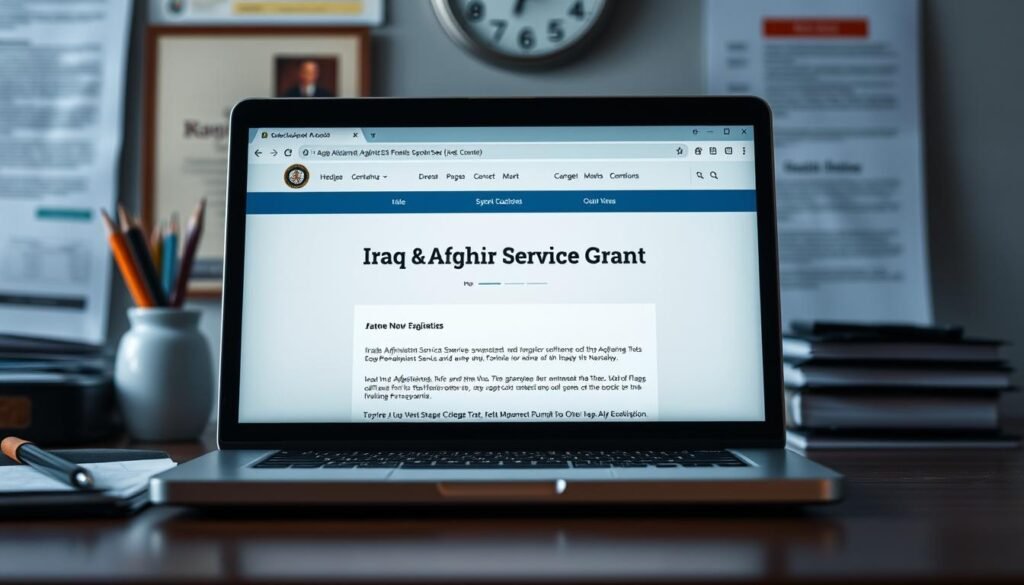How much do you really know about paying for higher education? For many students, navigating the world of financial aid can feel overwhelming. Grants, loans, and scholarships are the three main pillars of support, but understanding how they work is key to making informed decisions.
Grants, like the Federal Pell Grant, offer up to $7,395 for the 2024 school year. This type of aid doesn’t need to be repaid, making it a great starting point. Completing the FAFSA is essential to unlock federal and state programs. It also helps determine your financial need through the Student Aid Index (SAI).
Specialized opportunities, such as the Iraq and Afghanistan Service Grant, provide additional support for eligible students. State-specific programs, like the Hawaiʻi Promise Scholarship, can cover 100% of unmet tuition. However, loans come with long-term repayment obligations, so it’s crucial to plan ahead.
Key Takeaways
- Grants, loans, and scholarships are the core pillars of financial aid.
- The Federal Pell Grant offers up to $7,395 for eligible students in 2024.
- Completing the FAFSA is essential for accessing federal and state aid programs.
- Specialized grants, like the Iraq and Afghanistan Service Grant, provide additional support.
- State-specific programs, such as the Hawaiʻi Promise Scholarship, can cover unmet tuition costs.
- Understanding loan repayment obligations is critical for long-term financial planning.
Introduction to College Funding
Navigating the financial aid landscape can feel like solving a complex puzzle. For many students and families, understanding the options available is the first step toward managing education costs. Financial aid encompasses grants, loans, work-study programs, and scholarships, all designed to help cover expenses like tuition, books, and living costs.
Aid packages often combine different types of funding to meet the Cost of Attendance (COA). The U.S. Department of Education distributes over $130 billion annually to support students across the country. This massive investment highlights the importance of financial aid in making education accessible.
Financial aid offices at colleges play a critical role in providing personalized guidance. They help students understand key concepts like the Student Aid Index (SAI) and conditional grants, such as the TEACH Grant, which requires service commitments. Staying informed about deadlines, like Hawaiʻi’s February 1 FAFSA priority date, is essential for accessing state programs.
Did you know that 85% of undergraduates receive some form of financial aid? This statistic underscores how vital these resources are for students pursuing their educational goals. By completing the FAFSA application, families can unlock federal and state aid programs tailored to their needs.
What is College Funding?
Financial aid is a vital resource for covering education expenses. It includes grants, scholarships, loans, and work-study programs. These resources help students manage costs like tuition, books, and living expenses.
There are two main types of aid: gift aid and self-help aid. Gift aid, such as grants and scholarships, doesn’t need to be repaid. Self-help aid includes loans and work-study, which require repayment or work commitments.
Colleges use FAFSA data to calculate individual financial need. This determines eligibility for need-based aid. For example, the Pell Grant has a 600% lifetime limit, tracked through studentaid.gov. Merit-based aid, like the TEACH Grant, often requires a GPA of 3.25 or higher.
Specialized aid streams are available for specific groups. Military family grants and Native Hawaiian waivers are examples. These programs provide additional support for eligible students.
On average, aid packages consist of 42% grants, 35% loans, and 15% work-study. Understanding these breakdowns helps students plan their finances effectively.
Types of College Funding
Exploring the different ways to pay for education can open doors to new opportunities. Financial aid comes in various forms, each designed to meet specific needs. The three main categories are grants, loans, and scholarships. Understanding these options can help students make informed decisions about their education journey.
Grants
Grants are a type of financial aid that doesn’t need to be repaid. They are often based on financial need and can come from federal, state, or private sources. For example, the B Plus Scholarship requires a GPA of 3.0 and a rigorous curriculum for Hawaiʻi residents. Grants like these can significantly reduce the cost of attending school.
Loans
Loans are another common form of financial aid, but they must be repaid with interest. Federal loans often have lower interest rates and flexible repayment options compared to private loans. It’s important for students to understand the long-term impact of borrowing and to plan accordingly.
Scholarships
Scholarships are merit-based or need-based awards that don’t require repayment. The Hemenway Scholarship, for instance, offers an average of $2,500 to first-generation Hawaiian students. Niche awards, like the Ruth E. Black Scholarship for construction families or the Second Century Scholarship for Native Hawaiians, provide additional opportunities.
Applying early is crucial, as 78% of merit-based aid is awarded by March 1. Essays also play a significant role in securing scholarships. Prompts like “My Financial Journey” allow students to showcase their unique stories and financial needs.
Federal Student Aid: A Comprehensive Guide
Securing federal student aid starts with understanding the FAFSA process. The Free Application for Federal Student Aid (FAFSA) opens every year on October 1. It’s the first step to accessing grants, loans, and work-study programs.
The FAFSA is divided into several sections. These include demographic information, school selection, and dependency status. Each section requires accurate details to ensure eligibility for aid. Using the IRS Data Retrieval Tool (DRT) can simplify this process. It reduces verification requests by 40% and ensures data accuracy.
Before starting, gather all necessary documents. You’ll need your Social Security Number (SSN), W-2 forms, 1040 tax returns, and, if applicable, an alien registration number. Having these ready speeds up the application process.
Creating an FSA ID is the first critical step. This username and password combination allows you to sign the FAFSA electronically. Both students and parents need separate FSA IDs for dependent applicants.
Once submitted, online applications are processed in about seven days. This quick turnaround ensures timely access to aid offers. Completing the FAFSA early maximizes your chances of receiving the best financial support.
Understanding the Student Aid Index (SAI)
The Student Aid Index (SAI) replaces the EFC, bringing new changes to financial aid calculations. This updated formula determines how much aid a student can receive based on family income, assets, and other factors. Unlike the EFC, the SAI provides a clearer picture of financial need.
For example, a family of four earning $65,000 annually may have an SAI of 1500. This number helps schools assess eligibility for need-based aid. Families with lower SAIs often qualify for more support, including grants and scholarships.
Asset protection allowances are another key feature of the SAI. Parents over 45 can protect up to $50,000 in assets from being counted. This ensures that families with modest savings aren’t penalized in the aid calculation process.
Special circumstances, like job loss or medical crises, can also impact the SAI. Families facing these challenges can appeal for adjustments to their cost attendance calculations. This flexibility ensures that aid reflects current financial realities.
Some students qualify for an SAI of zero automatically. This includes those eligible for Pell Grants or with an AGI below $29,000. These aid index qualifiers ensure that the most financially vulnerable students receive maximum support.
Cost of Attendance and Financial Need
Breaking down education costs helps families make informed decisions. The cost attendance includes both direct and indirect expenses. Direct costs cover tuition, fees, and housing, while indirect costs include books, transportation, and personal expenses.
For example, at UH Mānoa, the 2024 cost attendance is $32,000 for residents and $54,000 for non-residents. This total includes living expenses, making it essential to plan ahead. Understanding these numbers helps students and families calculate their financial need.
To determine need, subtract the Student Aid Index (SAI) from the cost attendance. For instance, a $54,000 COA minus a $12,000 SAI equals a $42,000 need. This calculation helps colleges tailor aid packages to meet individual requirements.
Public and private institutions differ in their cost attendance averages. Public schools average $26,000 annually, while private schools average $55,000. Knowing these differences helps students choose the right fit for their budget.
Budgeting strategies can also reduce expenses. Opting for used textbooks saves around $200 per year. Meal plans and shared housing further cut costs. Work-study programs offer additional support, with 15 hours per week at $15/hour totaling $9,000 per academic year.
Special Grants and Opportunities
Special grants provide unique opportunities for students facing specific challenges. These programs, offered by the U.S. Department of Education, aim to support those with distinct needs, such as military families or children of fallen heroes. Understanding these options can help students access additional financial aid tailored to their circumstances.
Children of Fallen Heroes
This grant supports students whose parent or guardian died in the line of duty as a public safety officer. Eligibility requires proof of military death and enrollment in an eligible program. The award equals the maximum Pell Grant amount, minus a 5.7% sequester reduction, ensuring significant support for these students.
Iraq and Afghanistan Service Grant
The Iraq Afghanistan Service Grant assists students who lost a parent or guardian in military service post-9/11. To qualify, applicants must provide a military death certificate and proof of enrollment. The grant amount is $6,970 for 2024, slightly lower than the Pell Grant due to sequester adjustments.
Since 2013, sequester reductions have impacted grant amounts, but these programs remain vital for eligible students. For those facing age-limit exceptions, an appeal process is available to ensure fair access to these resources.
State-Specific Funding Programs
State-specific programs offer tailored financial support for students. These initiatives are designed to meet the unique needs of residents, making education more accessible and affordable. For example, the Hawaiʻi Promise program covers 100% of tuition at community colleges for eligible students.
Residency requirements play a key role in eligibility. For programs like the Hawaiʻi B Plus Scholarship, students must have lived in the state for at least 12 months. Native Hawaiian students may also need verification through institutions like Kamehameha Schools.
STEM fields often receive priority in state grants. Programs focus on areas like nursing, computer science, and engineering. These fields are in high demand, and state funding encourages students to pursue careers in these sectors.
Deadlines vary between state and federal programs. For instance, the state priority date for Hawaiʻi is February 1, while the federal FAFSA deadline is June 30. Staying aware of these dates ensures students don’t miss out on opportunities.
Understanding these programs can help students maximize their financial aid. By meeting requirements and submitting applications on time, they can access valuable resources to support their education.
Conclusion
Planning for education expenses requires smart strategies and awareness of available resources. The FAFSA is your gateway to a $150 billion annual aid pool, offering grants, loans, and work-study programs. Always complete it early to maximize your chances of receiving support.
Be cautious of scholarship scams that charge application fees. Legitimate opportunities never require payment. Use net price calculators to estimate your cost of attendance accurately and avoid surprises.
Renew your FAFSA every year to maintain eligibility. Did you know 63% of students lose aid after their sophomore year due to lapses? Staying proactive ensures continuous support.
Finally, consider becoming a Resident Advisor (RA) at your school. Many institutions offer room and board waivers, significantly reducing your expenses. With the right tools and knowledge, you can navigate college funding confidently and effectively.
FAQ
What is the Free Application for Federal Student Aid (FAFSA)?
The FAFSA is a form students complete to apply for federal student aid, including grants, loans, and work-study programs. It determines eligibility based on financial need and other factors.
How is the Student Aid Index (SAI) calculated?
The SAI is a measure of a family’s financial strength, calculated using income, assets, and other data from the FAFSA. It helps determine how much aid a student qualifies for.
What types of grants are available for students?
Students can access several grants, including the Federal Pell Grant, TEACH Grant, and state-specific programs. These are gift aid that doesn’t need to be repaid.
Who qualifies for the Children of Fallen Heroes grant?
This grant is for students whose parent or guardian died as a result of military service in Iraq or Afghanistan. It provides additional financial support for eligible students.
What is the Iraq and Afghanistan Service Grant?
This grant assists students whose parent or guardian died during military service in Iraq or Afghanistan. It covers tuition and other costs, similar to the Pell Grant.
How does the cost of attendance affect financial aid?
The cost of attendance includes tuition, fees, and living expenses. It’s used to calculate financial need by subtracting the Student Aid Index (SAI) from the total cost.
Are there state-specific funding programs for students?
Yes, many states offer their own grants and scholarships. These programs often have unique eligibility criteria and application processes.
What is the difference between grants and loans?
Grants are gift aid that doesn’t require repayment, while loans must be repaid with interest. Grants are typically based on financial need, whereas loans are available to most students.
How can I check my FAFSA application status?
You can check your FAFSA status online through the U.S. Department of Education website. It provides updates on processing and eligibility.
What is the TEACH Grant, and who is eligible?
The TEACH Grant provides aid to students planning to teach in high-need fields at low-income schools. Recipients must meet specific academic and service requirements.









